Hey there, fellow animal enthusiasts! Today, we’re diving deep into the world of newborn capybaras. These adorable little furballs are like nature’s own teddy bears, and I’m here to spill all the tea on how to care for them, what to expect, and why they’re so darn cute.
What Exactly is a Newborn Capybara?
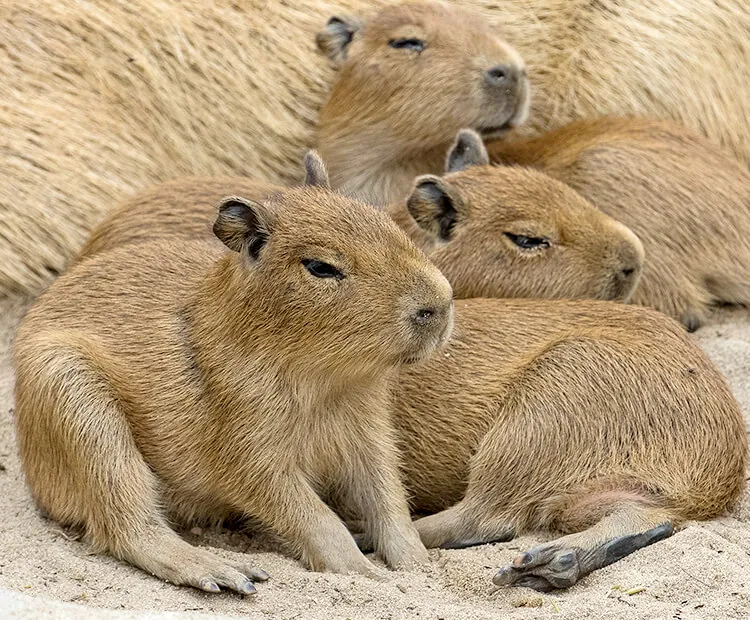
Let’s kick things off with the basics. A newborn capybara, also known as a pup, is the baby version of the world’s largest rodent. Yeah, you heard that right – these little guys are rodents, but trust me, they’re way cuter than your average mouse.
When they’re born, capybara pups are like mini-versions of their parents. They come into the world with:
- A full coat of fur
- Open eyes
- A complete set of teeth
Talk about being ready for action! These pups are born ready to take on the world, which is pretty impressive considering they’re only about the size of a small loaf of bread.
The First Days of a Capybara Pup’s Life
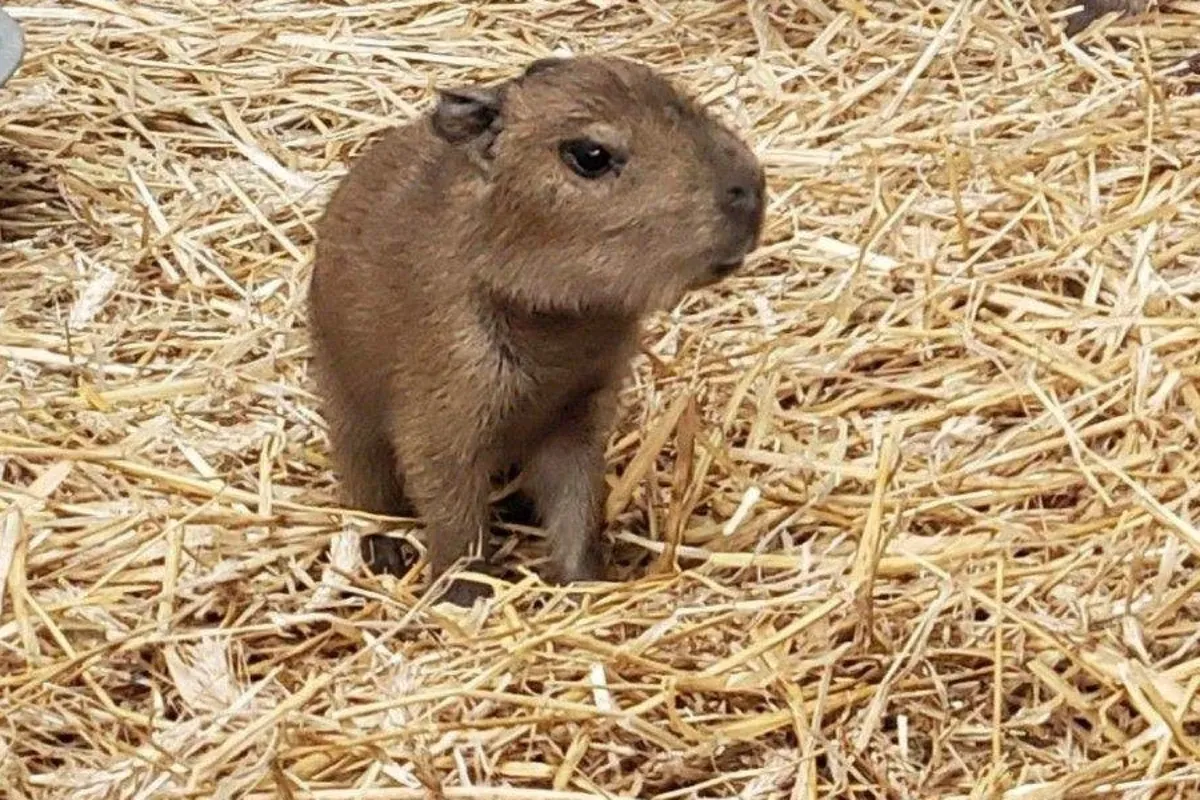
Now, you might be wondering, “What’s life like for these little guys in their first few days?” Well, let me tell you, it’s a wild ride.
Feeding Time
From day one, these pups are all about that milk life. They rely entirely on their mother’s milk for the first week. But here’s where it gets interesting – capybaras are all about that community life. Any lactating female in the group can nurse any pup. Talk about a supportive mom squad!
Learning to Swim
You might think these little pups would need some time before they hit the water, but nope! Capybaras are semi-aquatic mammals, and their babies are natural-born swimmers. Within hours of birth, they’re already taking their first dips. It’s like they come with built-in floaties!
First Steps
These pups aren’t just water babies – they’re land lovers too. Within a few hours of birth, they’re up and walking. It’s like they’ve got a built-in GPS system guiding them around their new world.
The Rapid Growth of Capybara Pups
Alright, let’s talk about how these little pups grow. It’s like they’re on some kind of super-rodent growth hormone!
Weight Gain
At birth, capybara pups weigh between 2-3 pounds. But hold onto your hats, because by the time they’re 18 months old, they can weigh up to 88 pounds. That’s like going from a chihuahua to a labrador in less than two years!
Dietary Changes
As they grow, their diet starts to change. Around the one-week mark, they start nibbling on grass. By 16 weeks, they’re fully weaned and eating like adults. Their menu includes:
- Grass
- Aquatic plants
- Bark
- Fruits (in moderation)
Social Life of Baby Capybaras
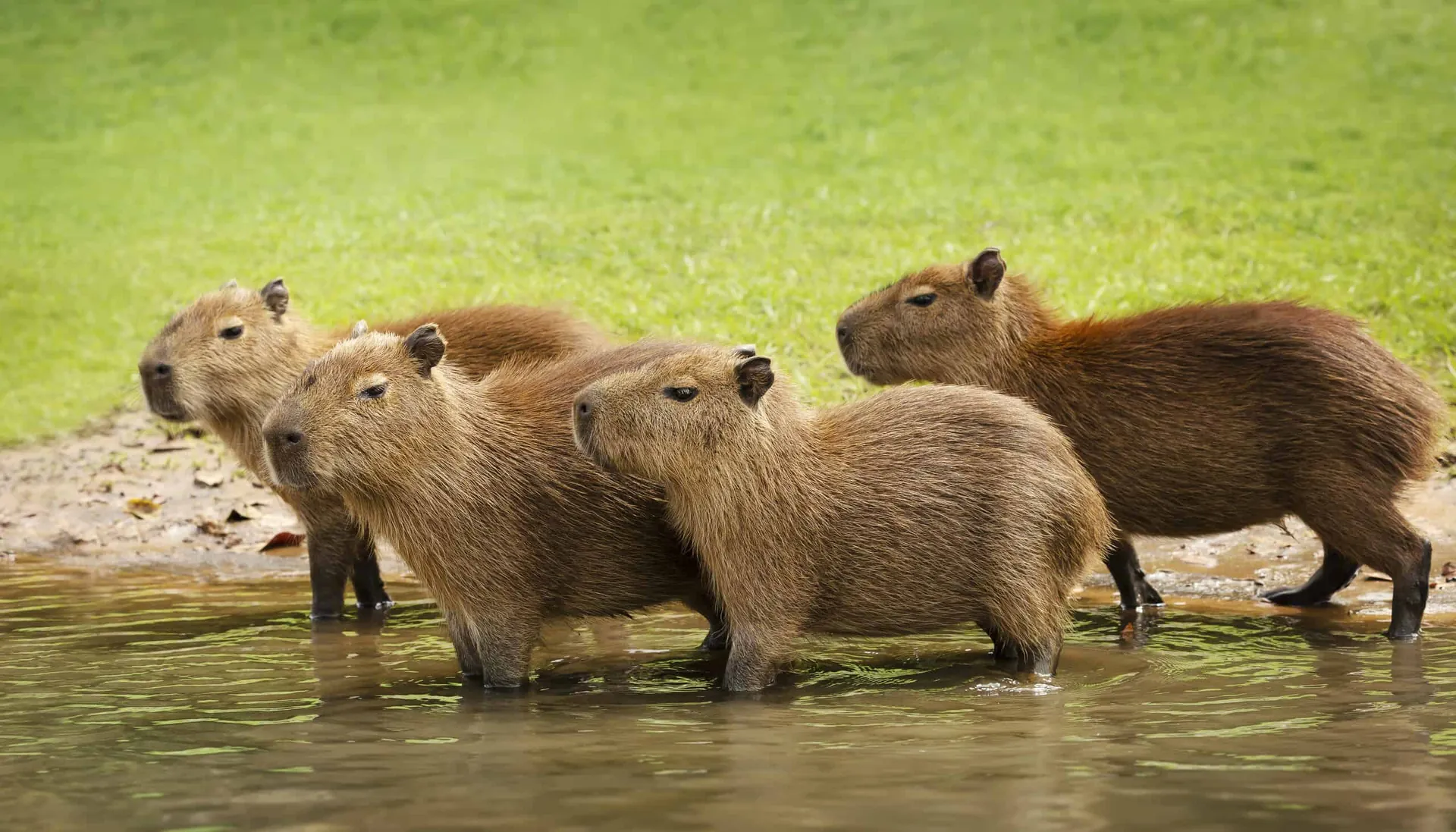
Now, let’s chat about the social scene for these pups. Capybaras are like the popular kids in high school – they’re all about that group life.
Group Dynamics
Capybara pups are born into groups called herds. These herds can have anywhere from 10-20 members. It’s like they’re born into their own little social club!
Playtime
Just like human kids, capybara pups love to play. They chase each other, wrestle, and even play in the water. It’s not just fun and games though – this play helps them develop important social skills and physical abilities.
Caring for a Newborn Capybara
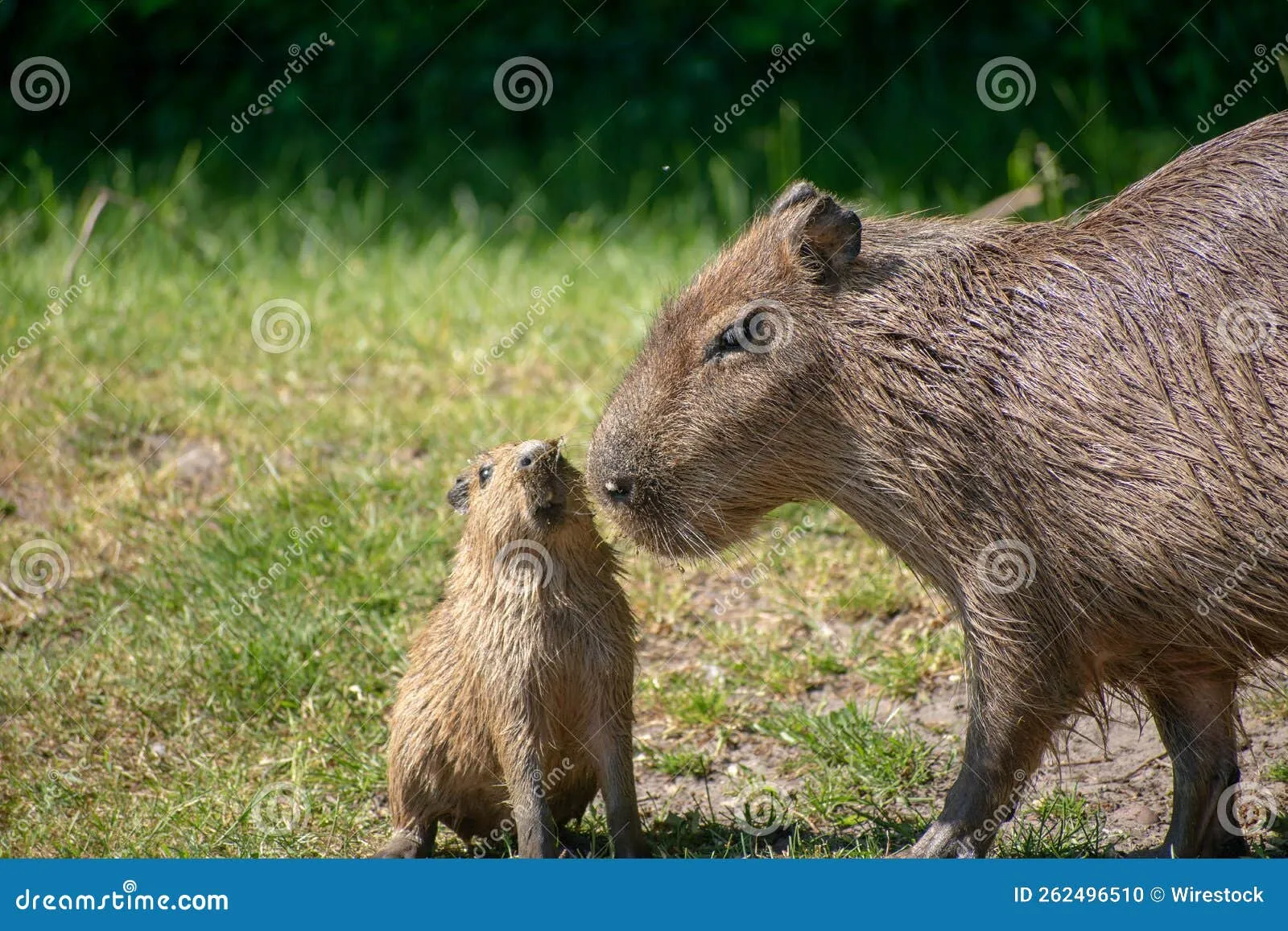
Now, I know what you’re thinking – “Can I keep one as a pet?” Well, pump the brakes there, buddy. Capybaras are wild animals and need specialized care. But if you’re in a position to care for one (like at a wildlife sanctuary), here’s what you need to know:
Housing
Capybaras need a lot of space. We’re talking a minimum of 12 feet by 20 feet for an outdoor enclosure. And don’t forget the water feature – these guys need a pool that’s at least 3.5 feet deep.
Temperature Control
These pups need to stay warm. If temperatures drop below 45°F, you’ll need to provide a heat lamp. On the flip side, if it gets above 90°F, they’ll need to come inside to cool off.
Diet
For the first 16 weeks, they’ll need their mother’s milk or a specialized formula. After that, they’ll need a diet rich in grasses and aquatic plants.
Common Health Issues in Newborn Capybaras
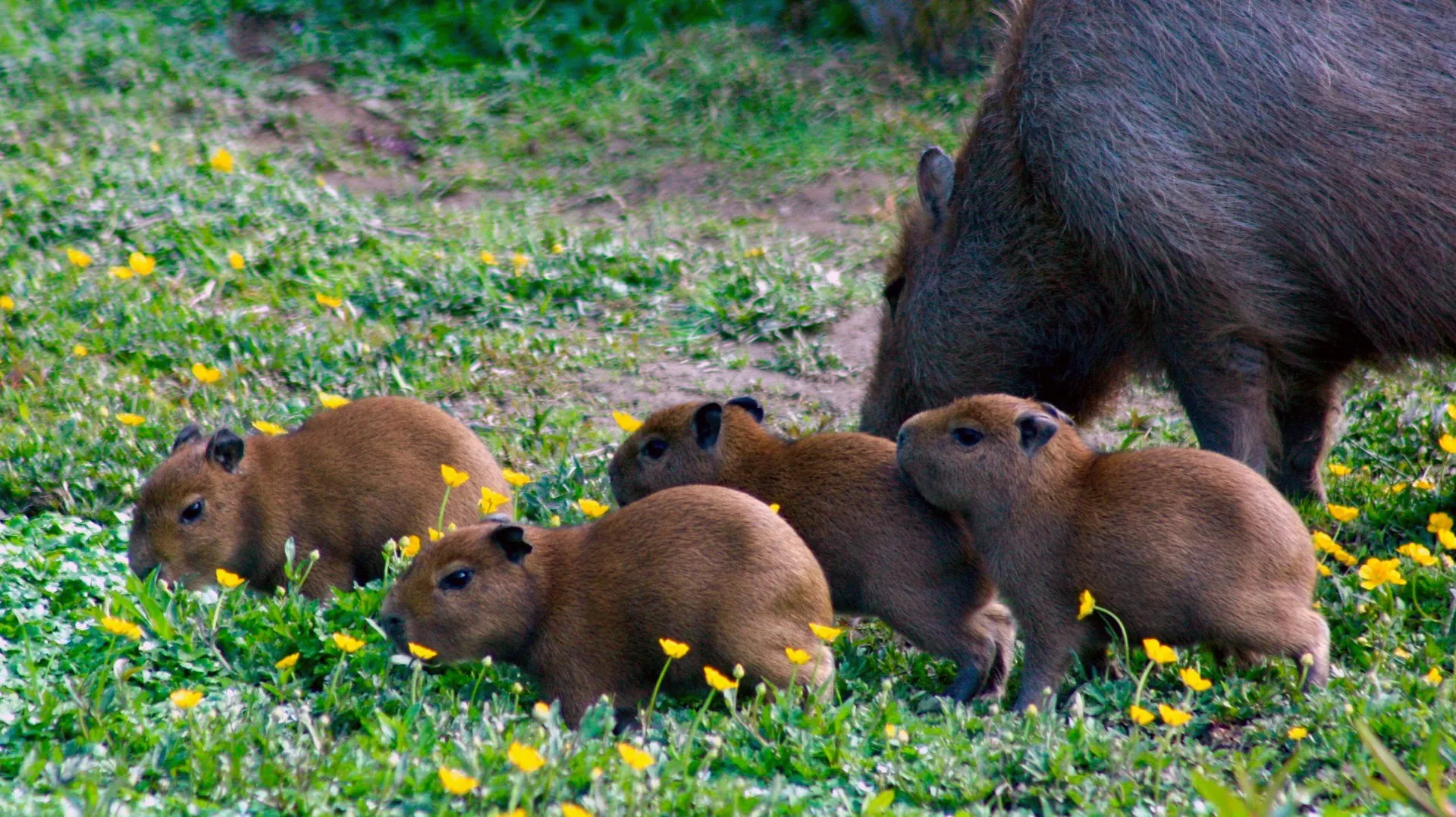
Like all babies, capybara pups can face some health challenges. Here are a few things to watch out for:
- Respiratory infections
- Parasites (like mites or lice)
- Dental problems (those teeth keep growing!)
Regular check-ups with a vet who specializes in exotic animals are crucial for keeping these little guys healthy.
FAQs About Newborn Capybaras
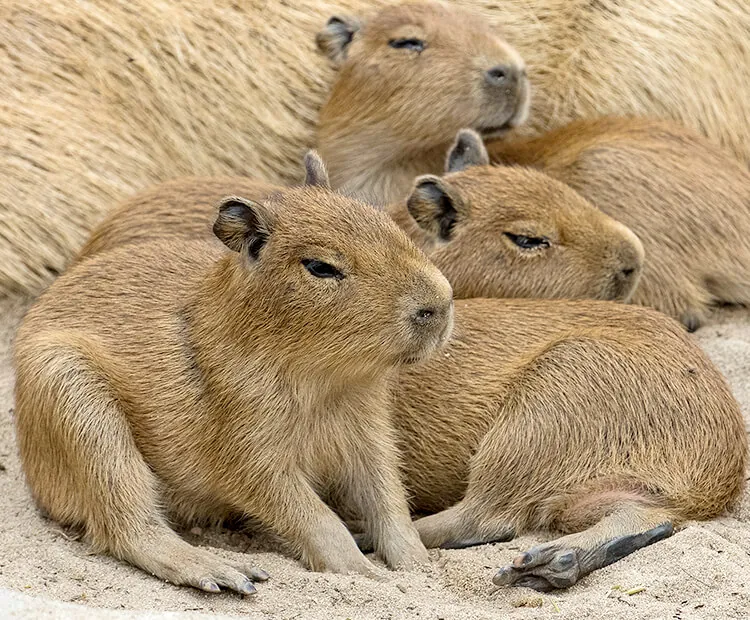
Let’s tackle some of the most common questions people have about these adorable pups:
Q: How many babies do capybaras usually have?
A: Capybaras typically have litters of 3-8 pups.
Q: Can newborn capybaras swim?
A: Yes, they can swim shortly after birth, but they’re not as skilled as adults at first.
Q: How long do capybara pups stay with their mother?
A: They stay with their mother for about 16 weeks before they’re fully weaned.
Q: Are capybaras good pets?
A: While they’re cute, capybaras are wild animals and aren’t suitable as pets for most people. They need specialized care and a lot of space.
Q: What do you call a baby capybara?
A: A baby capybara is called a pup.
Wrapping It Up
So there you have it, folks – everything you need to know about newborn capybaras. From their impressive birth weight to their rapid growth and social nature, these little pups are truly fascinating creatures.
Remember, while they might look cuddly and cute, capybaras are wild animals that need specialized care. If you want to see these adorable pups up close, your best bet is to visit a wildlife sanctuary or zoo that specializes in South American wildlife.
And hey, next time you’re at a party and someone brings up rodents, you can wow them with your newfound capybara knowledge. Trust me, it’s a great conversation starter!
So, until next time, keep being curious about the amazing animals we share this planet with. Who knows? Maybe one day you’ll find yourself face-to-face with a capybara pup, and you’ll be ready with all the facts!
